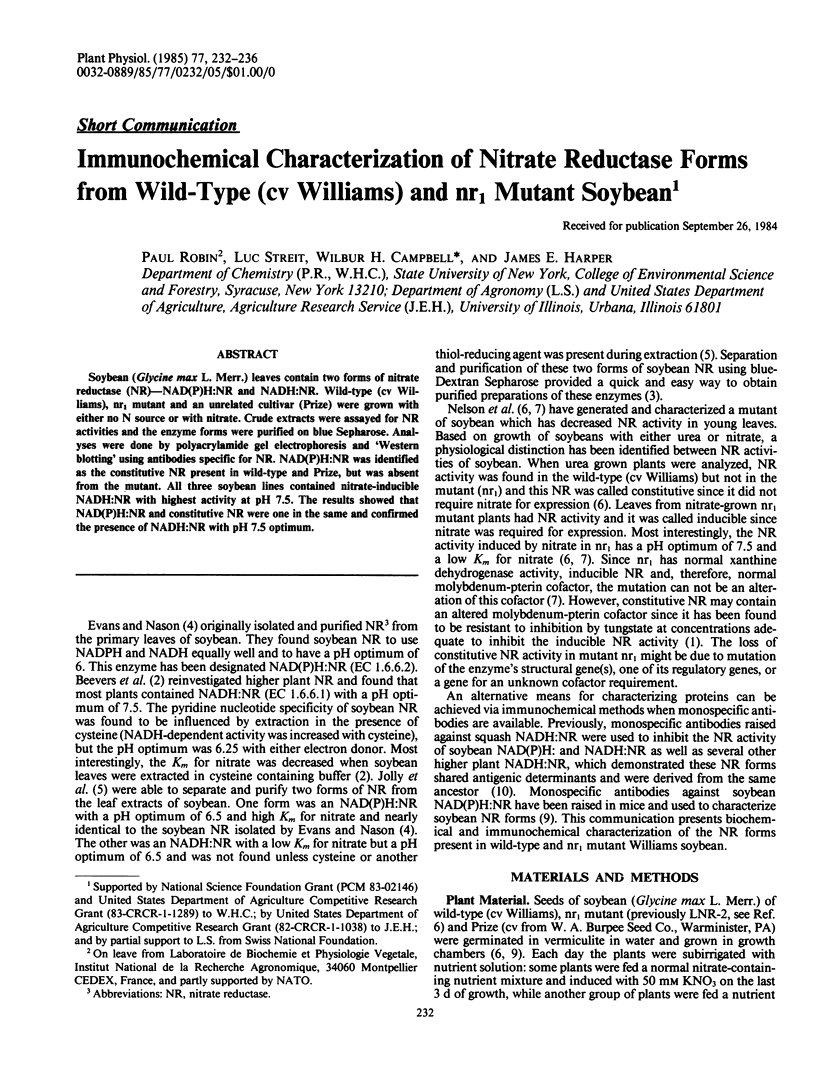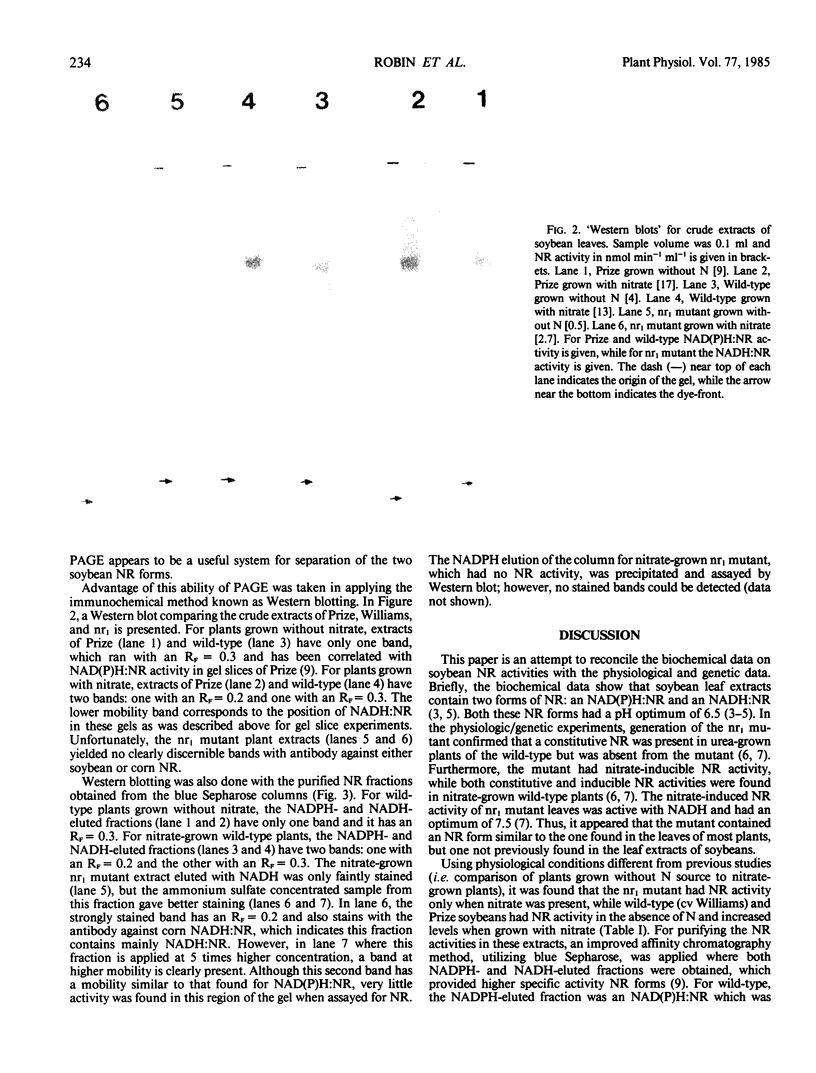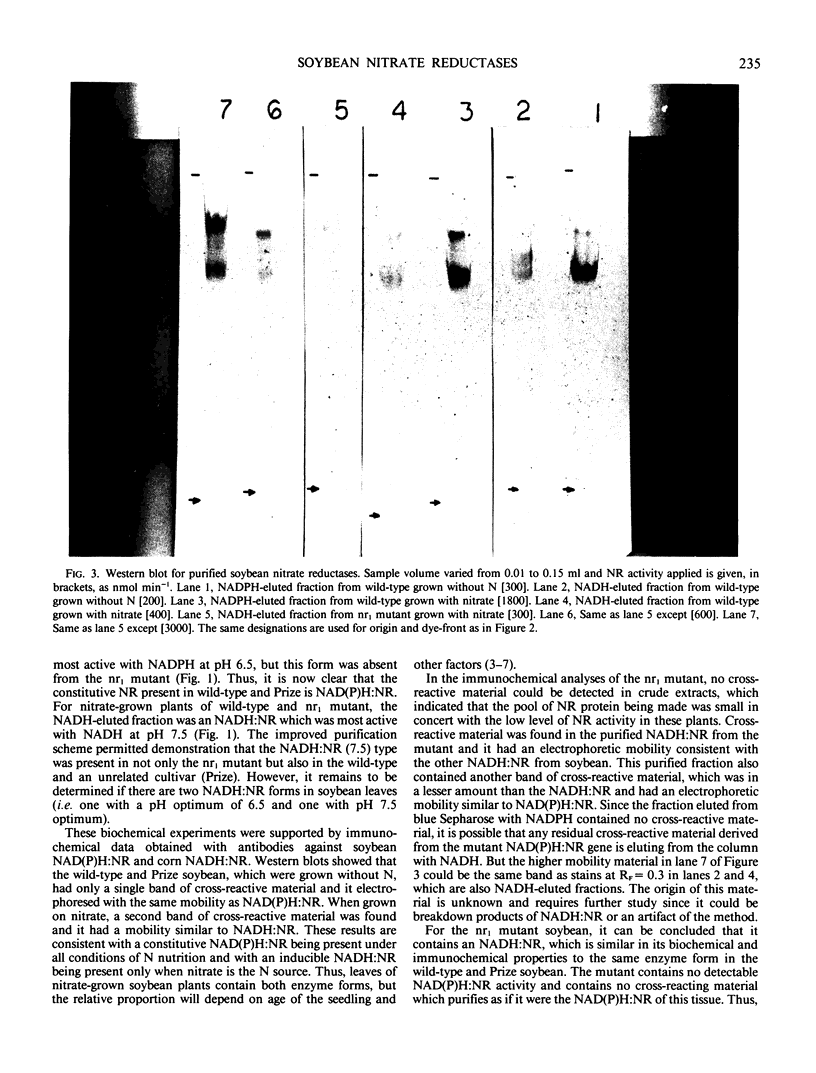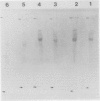Abstract
Soybean (Glycine max L. Merr.) leaves contain two forms of nitrate reductase (NR)—NAD(P)H:NR and NADH:NR. Wild-type (cv Williams), nr1 mutant and an unrelated cultivar (Prize) were grown with either no N source or with nitrate. Crude extracts were assayed for NR activities and the enzyme forms were purified on blue Sepharose. Analyses were done by polyacrylamide gel electrophoresis and `Western blotting' using antibodies specific for NR. NAD(P)H:NR was identified as the constitutive NR present in wild-type and Prize, but was absent from the mutant. All three soybean lines contained nitrate-inducible NADH:NR with highest activity at pH 7.5. The results showed that NAD(P)H:NR and constitutive NR were one in the same and confirmed the presence of NADH:NR with pH 7.5 optimum.
Full text
PDF




Images in this article
Selected References
These references are in PubMed. This may not be the complete list of references from this article.
- Aslam M. Differential effect of tungsten on the development of endogenous and nitrate-induced nitrate reductase activities in soybean leaves. Plant Physiol. 1982 Jul;70(1):35–38. doi: 10.1104/pp.70.1.35. [DOI] [PMC free article] [PubMed] [Google Scholar]
- BEEVERS L., FLESHER D., HAGEMAN R. H. STUDIES ON THE PYRIDINE NUCLEOTIDE SPECIFICITY OF NITRATE REDUCTASE IN HIGHER PLANTS AND ITS RELATIONSHIP TO SULFHYDRYL LEVEL. Biochim Biophys Acta. 1964 Sep 18;89:453–464. doi: 10.1016/0926-6569(64)90071-9. [DOI] [PubMed] [Google Scholar]
- Evans H. J., Nason A. Pyridine Nucleotide-Nitrate Reductase from Extracts of Higher Plants. Plant Physiol. 1953 Apr;28(2):233–254. doi: 10.1104/pp.28.2.233. [DOI] [PMC free article] [PubMed] [Google Scholar]
- Jolly S. O., Campbell W., Tolbert N. E. NADPH- and NADH-nitrate reductases from soybean leaves. Arch Biochem Biophys. 1976 Jun;174(2):431–439. doi: 10.1016/0003-9861(76)90371-4. [DOI] [PubMed] [Google Scholar]
- Nelson R. S., Ryan S. A., Harper J. E. Soybean mutants lacking constitutive nitrate reductase activity : I. Selection and initial plant characterization. Plant Physiol. 1983 Jun;72(2):503–509. doi: 10.1104/pp.72.2.503. [DOI] [PMC free article] [PubMed] [Google Scholar]
- Redinbaugh M. G., Campbell W. H. Purification of Squash NADH:Nitrate Reductase by Zinc Chelate Affinity Chromatography. Plant Physiol. 1983 Jan;71(1):205–207. doi: 10.1104/pp.71.1.205. [DOI] [PMC free article] [PubMed] [Google Scholar]
- Smarrelli J., Campbell W. H. Immunological approach to structural comparisons of assimilatory nitrate reductases. Plant Physiol. 1981 Dec;68(6):1226–1230. doi: 10.1104/pp.68.6.1226. [DOI] [PMC free article] [PubMed] [Google Scholar]
- Towbin H., Staehelin T., Gordon J. Electrophoretic transfer of proteins from polyacrylamide gels to nitrocellulose sheets: procedure and some applications. Proc Natl Acad Sci U S A. 1979 Sep;76(9):4350–4354. doi: 10.1073/pnas.76.9.4350. [DOI] [PMC free article] [PubMed] [Google Scholar]




